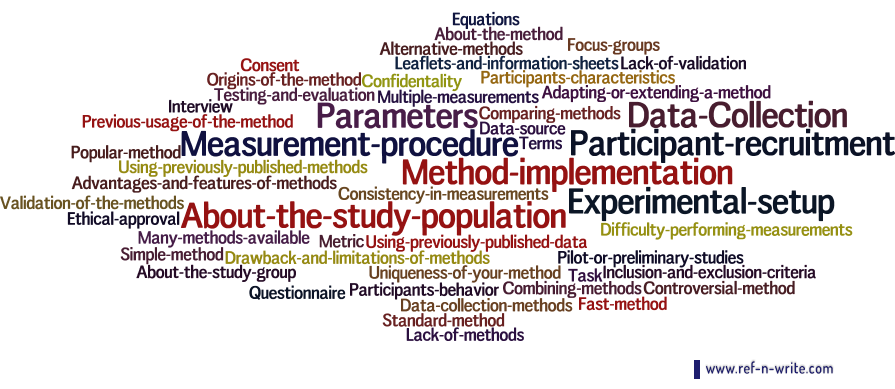PhD students are expected to write and publish research papers to validate their research work and findings. Writing your first research paper can seem like a daunting task at the start but must be done to validate your work. If you are a beginner writer new to academic writing or a non-native English speaker then it might seem like a daunting process at inception. The best way to begin writing a research paper is to learn about the research paper structure needed in your field, as this may vary between fields. Producing a research paper structure first with various headings and subheadings will significantly simplify the writing process. In this blog, we explain the basic structure of a research paper and explain its various components. We elaborate on various parts and sections of a research paper. We also provide guidance to produce a research paper structure for your work through word cloud diagrams that illustrate various topics and sub-topics to be included under each section. We recommend you to refer to our other blogs on academic writing tools, academic writing resources, and academic phrase-bank, which are relevant to the topic discussed in this blog.
1. Introduction
The Introduction section is one of the most important sections of a research paper. The introduction section should start with a brief outline of the topic and then explain the nature of the problem at hand and why it is crucial to resolve this issue. This section should contain a literature review that provides relevant background information about the topic. The literature review should touch upon seminal and pioneering works in the field and the most recent studies pertinent to your work.

The literature review should end with a few lines about the research gap in the chosen domain. This is where you explain the lack of adequate research about your chosen topic and make a case for the need for more research. This is an excellent place to define the research question or hypothesis. The last part of the introduction should be about your work. Having established the research gap now, you have to explain how you intend to solve the problem and subsequently introduce your approach. You should provide a clear outline that includes both the primary and secondary aims/objectives of your work. You can end the section by providing how the rest of the paper is organized. When you are working on the research paper structure use the word cloud diagrams as a guidance.
2. Material and Methods
The Materials and methods section of the research paper should include detailed information about the implementation details of your method. This should be written in such a way that it is reproducible by any person conducting research in the same field. This section should include all the technical details of the experimental setup, measurement procedure, and parameters of interest. It should also include details of how the methods were validated and tested prior to their use. It is recommended to use equations, figures, and tables to explain the workings of the method proposed. Add placeholders for figures and tables with dummy titles while working on the research paper structure.

Suppose your methodology involves data collection and recruitment. In that case, you should provide information about the sample size, population characteristics, interview process, and recruitment methods. It should also include the details of the consenting procedure and inclusion and exclusion criteria. This section can end with various statistical methods used for data analysis and significance testing.
3. Results and Discussion
Results and Discussion section of the research paper should be the concluding part of your research paper. In the results section, you can explain your experiments’ outcome by presenting adequate scientific data to back up your conclusions. You must interpret the scientific data to your readers by highlighting the key findings of your work. You also provide information on any negative and unexpected findings that came out of your work. It is vital to present the data in an unbiased manner. You should also explain how the current results compare with previously published data from similar works in the literature.

In the discussion section, you should summarize your work and explain how the research work objectives were achieved. You can highlight the benefits your work will bring to the overall scientific community and potential practical applications. You must not introduce any new information in this section; you can only discuss things that have already been mentioned in the paper. The discussion section must talk about your work’s limitations; no scientific work is perfect, and some drawbacks are expected. If there are any inconclusive results in your work, you can present your theories about what might have caused it. You have to end your paper with conclusions and future work. In conclusion, you can restate your aims and objectives and summarize your main findings, preferably in two or three lines. You should also lay out your plans for future work and explain how further research will benefit the research domain. Finally, you can also add ‘Acknowledgments’ and ‘References’ sections to the research paper structure for completion.







Useful. Thanks.
Thanks your effort of writting research
well articulated
Interested
Thank you author
Most usefull to write research article and publish in standard journal
Good
Thank you for the write up. I have really learnt a lot.
Thanks for your efforts